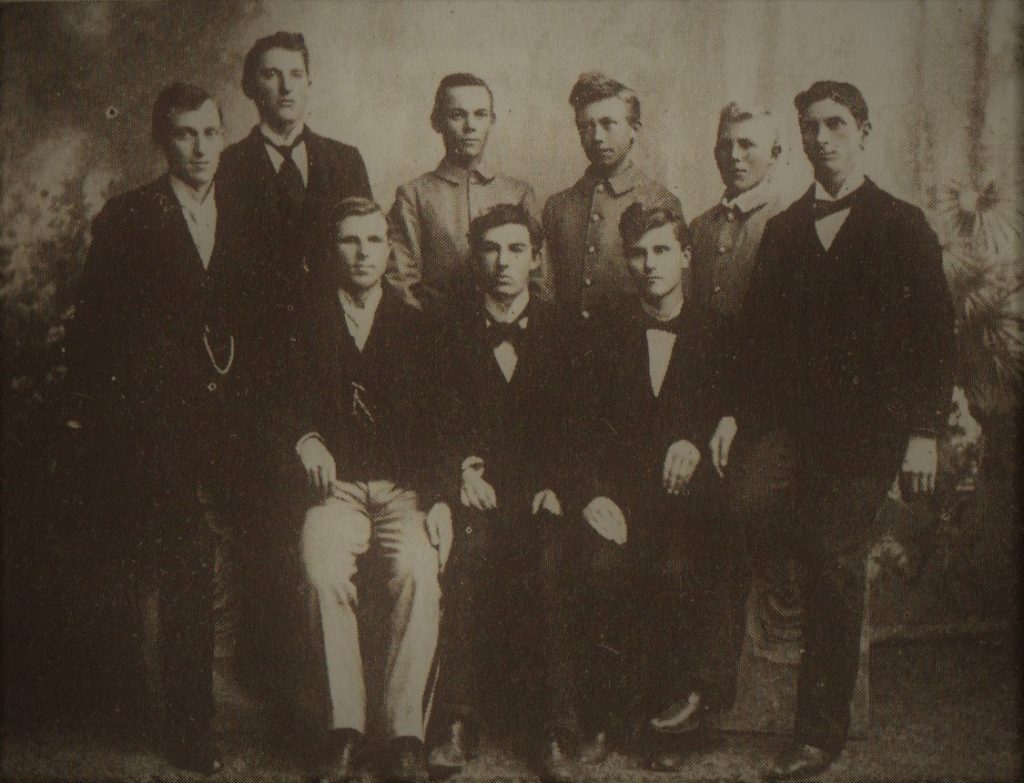Icelandic immigrants to North America faced incredible adjustments in just about every aspect of life either in the United States or Canada. Just about everything was new to them. It is, therefore, noteworthy how much emphasis was put on education. In the 1870s and ’80s, a few families in the wilderness of New Iceland in Manitoba or around Mountain in North Dakota had barely managed to build a house before they began to discuss education for their children. In addition, it can be added that both the United States and Canada supported schools and education throughout the immigration period 1870-1920. The Icelandic settlement in North Dakota is a good example. Rev. Páll Thorlakson explored regions in North Dakota in 1878 and selected a fairly large area for an Icelandic settlement. This was in Pembina County and around 1880 and the years that followed small rural communities were established. In 1882 public schools were established, the first one built in Garðar that same year. The teacher was Rev. Friðrik J. Bergmann. The first school at Mountain was in a house Steingrímur Þorláksson built, he was the teacher. At Hallson, Bjarni Dalsted was the first teacher. To begin with, nearly all teachers in every school were Icelandic; for example, Dr. Ólafur Björnsson, Dr. Magnús Halldórsson, Rev. Runólfur Marteinsson, Rev. Rögnvaldur Pétursson, Vilhjálmur Stefánsson, Gunnlaugur Vigfússon and Guðmyndur S. Grímsson. Most of these were young students heading for further studies at universities who undoubtedly influenced a few of their pupils to follow suit. It is interesting to note that girls also went for higher education for example Lína Jakobsdóttir and Hallfríður Sigurbjörnsdóttir in 1885. Lína was the daughter of Jakob Sigurðsson Eyfjörð and Guðlaug Benediktsdóttir while Hallfríður’s parents were Sigurbjörn Guðmundsson Snowfield and Signý Magnúsdóttir, who died in Iceland. The brothers Bragi and Skúli Guðmundsson, sons of Guðmundur Skúlason and Guðrún Guðmundsdóttir from Skagafjörður finished a law degree from the University of N. Dakota in Grand Forks, Bragi the first Icelander to graduate from that university. Icelandic attendance there was quite high in the last decade of the 19th century resulting in the founding of The Icelandic Student Association in Grand Forks. Many lived at the home of Jón Jónsson from Munkaþverá and his wife, Guðný Eiríksdóttir.

Standing from left: Peter G. Johnson, E. J. Snædal, Bjarni Jóhannsson, Vilhjálmur Stefánsson, John Samson and John G. Johnson. Sitting from left: Paul E. Halldórsson, Carl Gunnlaugsson and Hjörleifur Kristjánsson.
Standing from left: Peter G. Johnson or Pétur Gunnlaugsson was the son of Gunnlaugur Jónsson and Sigríður Runólfsdóttir who emigrated in 1883 from S. Múlasýsla and settled in the Fjalla Settlement in N. Dakota. Next is E. J. Snædal or Einar Jónsson, son of Jón Einarsson and Hermannía Jónsdóttir from N. Múlasýsla, the family used Snædal in the west. Next to Einar is Bjarni Jóhannsson, son of Ólafur Jóhannsson and Sigríður Bjarnadóttir from Skagafjörður. Next is Vilhjálmur Stefánsson, his parents were Jóhann Stefánsson and Ingibjörg Jóhannesdóttir, who emigrated west from Akureyri in 1876. John Samson or Jón Jónasson was son of Jónas Samsonarson, a settler in N. Dakota and later at Kristnes in Saskatchewan. Friðbjörn Samson, settler in the Garðar settlement, was Jónas’ brother. John G. Johnson or Jón Gunnlaugsson was brother of Pétur Gunnlaugsson.
Front row. Paul E. Halldórsson or Páll Eiríksson was the son of Eiríkur Halldórsson and Guðrún Pálína Ísfeld Pálsdótt1r. Carl Gunnlaugsson or Karl Eggertsson was the son of Eggert Gunnlaugsson and Rannveig Rögnvaldsdóttir who emigrated west from Skagafjörður in 1876. Hjörleifur Kristjánsson was the son of Trausti Kristjánsson and Sigrún Sigurðardóttir who emigrated west in 1883 from S. Þingeyjarsýsla.
